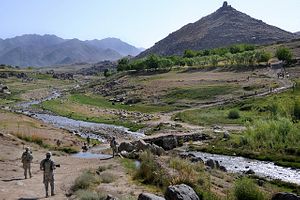This week, the Afghan Ministry of Defense announced that it will authorize the creation of a new force comprising militias to help the government maintain control of once-contested territory that the Afghan National Army captured from Taliban fighters.
The proposed force would be around 36,000 strong and work under the direct command of the Afghan Ministry of Defense. A spokesperson for the Afghan Ministry of Defense said this week that at least 7,500 personnel in the force will be officers of the Afghan National Army. The remaining personnel will be recruited from across the country.
According to Voice of America, the “recruitments will be made from Afghan government-controlled areas where they ultimately will be deployed after undergoing military training to keep insurgents from staging a comeback.”
The initiative would help the Kabul-based government fulfill an important shortfall in personnel to maintain control of contested parts of the country as the 2018 fighting season begins. As of early 2018, Taliban-affiliated forces are thought to control nearly half of Afghan territory.
The Ministry of Defense has yet to specify when it will begin recruitment, which suggests that the force may be slowly assembled throughout the year.
While the move serves as a low-cost and realistic solution to the Afghan government’s personnel shortfall, it will be scrutinized by rights groups who note a history of human rights abuses by Afghan militia forces—including militias granted de facto authority by the government.
Last year, the U.S. Special Inspector General for Afghanistan Reconstruction documented instances of child sexual assault among Afghan security forces. Human rights groups have highlighted the excessive use of force by government-sanctioned militias and Afghan forces against civilians as well.
In the first half of 2017, the number of civilian deaths in Afghanistan reached a record high in the 16 year since the U.S. invasion in 2001. According to United Nations statistics, 40 percent of civilian casualties were caused by the Taliban’s use of improvised explosives. Meanwhile, the UN noted that U.S. and Afghan airstrikes resulted in an increase in civilian casualties.
The Afghan effort comes months after U.S. President Donald J. Trump announced a new strategy for Afghanistan that would focus on counterterrorism and involved a modest surge in U.S. troop counts, which went from 8,400 at the end of the Obama administration to 14,000 by November 2017.
































